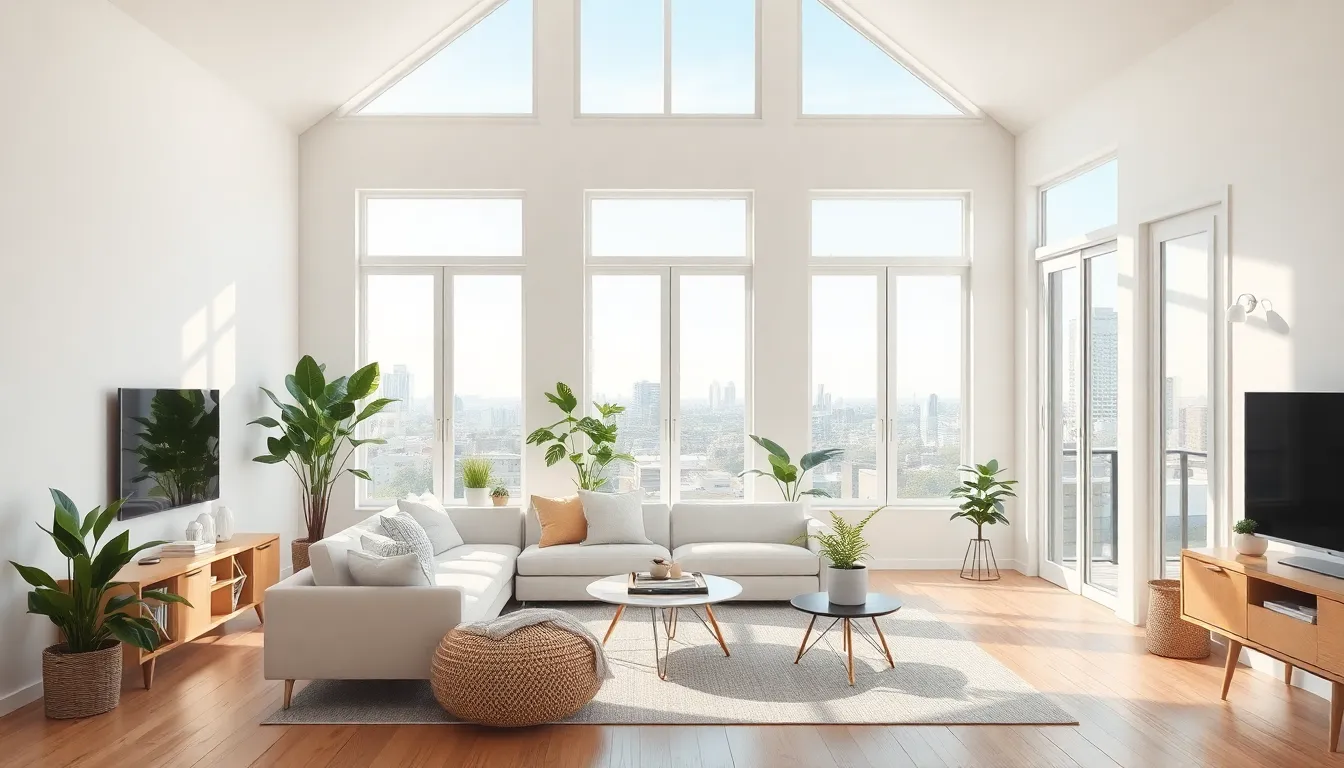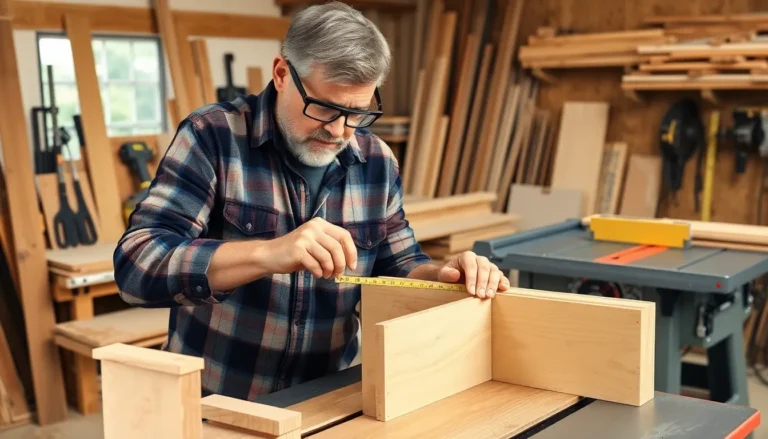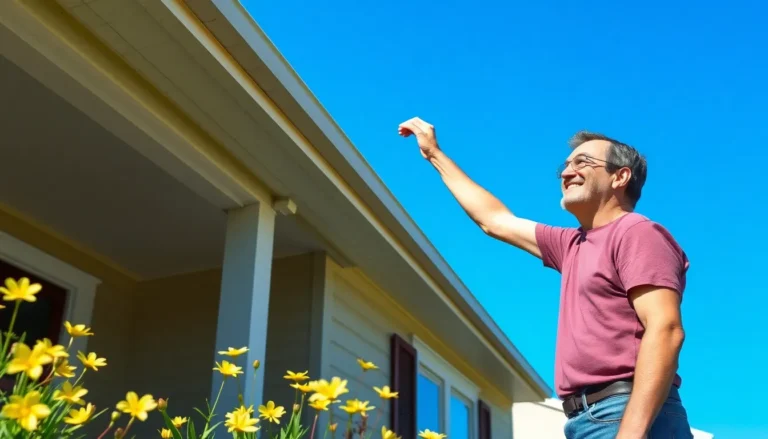In the quest for a cozy home, many overlook a crucial element: ventilation. Imagine living in a space where stale air and unwanted odors have a permanent residency. Yikes! Proper home ventilation installation not only keeps the air fresh but also prevents the dreaded musty smell that can turn even the most charming living room into a damp dungeon.
Table of Contents
ToggleUnderstanding Home Ventilation Installation
Proper home ventilation keeps the air fresh and enhances comfort levels. It ensures the removal of pollutants and humidity, creating a healthier living environment.
Importance of Proper Ventilation
Adequate ventilation directly impacts indoor air quality. Stale air can lead to various health issues, including respiratory problems. Effective ventilation systems help manage humidity levels, preventing mold growth and damaging materials. Proper airflow contributes to energy efficiency by regulating temperature throughout the home. Additional benefits include the reduction of unpleasant odors, making spaces more inviting for occupants and guests. Homeowners experience enhanced comfort and improved overall well-being with proper ventilation.
Types of Home Ventilation Systems
Several types of home ventilation systems exist, each serving specific needs. Natural ventilation relies on airflow through windows and vents. Mechanical ventilation employs fans to circulate air, providing controlled airflow. Energy recovery ventilators (ERV) combine fresh air influx with heat recovery, promoting energy efficiency. Balanced systems utilize both supply and exhaust fans to maintain air pressure. Exhaust ventilation systems focus on removing stale air, commonly found in kitchens and bathrooms. Each type offers distinct advantages depending on the home design and specific requirements.
Benefits of Home Ventilation Installation

Home ventilation installation offers several advantages that enhance overall living conditions. Notably, it promotes air quality, energy efficiency, and comfort within the home.
Improved Indoor Air Quality
Improved indoor air quality stems from effective ventilation systems. These systems actively eliminate indoor pollutants such as dust, pet dander, and volatile organic compounds (VOCs). Enhanced air quality leads to reduced respiratory issues and allergic reactions. With proper ventilation, moisture levels decrease, which inhibits mold growth and prevents musty odors. Homes benefit from a fresher atmosphere, contributing to overall well-being. This change supports better health outcomes for all residents, including children and the elderly, who are particularly vulnerable to poor air quality.
Energy Efficiency
Energy efficiency improves significantly with proper ventilation installation. By maintaining optimal airflow, homes experience less energy loss and reduced heating and cooling demands. Increased efficiency translates to lower utility bills, allowing homeowners to save money in the long term. Effective ventilation systems also help maintain balanced temperatures, reducing the need for excessive climate control. When energy consumption decreases, environmental impact lessens, making homes more sustainable. Homeowners investing in energy-efficient ventilation systems can enjoy comfortable spaces without sacrificing their finances or the environment.
Steps for Home Ventilation Installation
Proper installation of ventilation systems involves several crucial steps. Each step contributes to creating a healthier indoor environment.
Assessing Your Home’s Needs
Assess specific ventilation needs by examining existing airflow and humidity levels. Understanding the size and layout of the home helps identify problem areas. Evaluate current window and door configurations for potential natural ventilation options. Determine potential sources of indoor pollutants and humidity. Conduct a thorough analysis of the home’s purpose, considering the needs of occupants. Engaging a professional for a detailed assessment often provides comprehensive insights.
Choosing the Right System
Selecting the appropriate ventilation system requires consideration of airflow requirements and energy efficiency. Options include mechanical systems, natural ventilation, and energy recovery ventilators (ERV). Each system offers unique advantages according to home type and climate. Assess the benefits and costs associated with different systems. Energy efficiency plays a significant role in reducing long-term utility expenses. Consulting with ventilation experts can help narrow down choices based on specific needs.
Professional Installation vs. DIY
Deciding between professional installation and DIY depends on skills and comfort level. Professional installation ensures compliance with local codes and guarantees optimal performance. Understand that improper installation might lead to inefficient systems and safety hazards. DIY can save costs but often requires in-depth knowledge of ventilation mechanics. Weigh the risks and benefits of both options carefully to choose the best fit. Seeking professional advice can clarify the complexities of home ventilation systems.
Common Challenges in Home Ventilation Installation
Ventilation installation poses specific challenges that homeowners often face. Addressing these challenges ensures optimal performance and comfort.
Identifying Airflow Issues
Identifying airflow issues requires careful evaluation of each room. Homeowners should check for stagnant air pockets commonly found in corners or behind furniture. Observing symptoms such as stuffy air, increased humidity, or condensation helps pinpoint problems. Measuring airflow with tools like an anemometer can provide accurate readings. Ensuring that openings, ductwork, and exhaust outlets are clear contributes significantly to system effectiveness. Frequent investigations and adjustments maintain airflow efficiency and comfort.
Regulatory Requirements
Regulatory requirements for home ventilation installation vary by location. Local building codes typically dictate minimum ventilation rates and system types. Understanding these codes is crucial for compliance and safety. Homeowners must consult with local authorities or professionals to grasp these standards fully. Obtaining necessary permits ensures a smooth installation process and mitigates legal issues. Compliance with regulations can often improve energy efficiency and indoor air quality, benefiting overall home performance.
Investing in proper home ventilation installation is essential for maintaining a healthy and comfortable living space. Homeowners who prioritize ventilation can enjoy fresh air while minimizing odors and pollutants. By selecting the right system tailored to their needs, they can enhance indoor air quality and energy efficiency.
Addressing potential challenges during installation ensures long-term benefits, including reduced utility costs and improved overall home performance. With a focus on compliance and effective airflow, homeowners can create an environment that supports their well-being. Embracing these practices not only enhances comfort but also contributes to a more sustainable living space.



